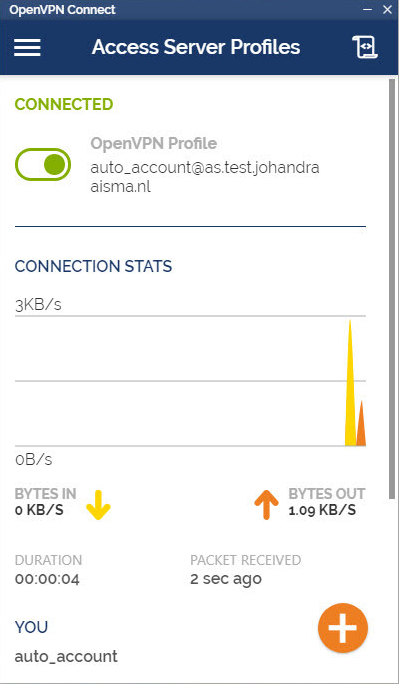If you use linux (optionally FreeBSD and Solaris, not tested),you may want to access the network through a tuntap interface. The mainadvantage of this interface, is that the guest has access to the host. The guest can evenhave access to the whole network if the host routes or masquerades the guest requests.No extra IP address is needed, all can be done using private IP addresses.
- Openvpnusers Tun Tap Driver For Mac Os
- Openvpnusers Tun Tap Driver For Mac Catalina
- Openvpnusers Tun Tap Driver For Macbook
Generally, tun and tap devices are most commonly used in two distinct application scenarios: The first one is VPN software (such as OpenVPN). In this scenario, the kernel sends its network packets to the tun or tap devices. The first step is to create the Tun/tap driver to start the connection and in Windows, I would use the tapinstall executable file to do this. I am trying to find a way how to do it for Linux but unfortunately, I am unable to find anything so far. Can anyone provide any insight on how to create a Tap/Tun driver in a Linux environment? Wes April 21, 2010 at 12:02 am. Using Tunnelblick 3.0 (Build 1437). If you have the “Set nameserver” flag in the UI set then up scripts are not executed. I added the following line to invoke the standard up script as part of tap-up-down.sh.
You'll find here instructions to set up Linux/Bochs to provide network access to the guest OSthrough a tuntap interface and private IP network. We're going to see howto :
enable the tuntap interface in the Linux Kernel
configure Bochs to use the tuntap interface
set up the private network between the host and the guest
set up the host to masquerade the guest network accesses
I had the exact same problem: The TAP driver wouldn't install on my PC, while my colleagues with the same model PC didn't have any problems. In the end I solved the problem by resetting my PC in such way that it kept my personal files but uninstalled all installed programs/apps. OpenVPN installation: unable to install TUN/TAP driver. Ask Question Asked 8 years, 4 months ago. Active 8 years, 4 months ago. Viewed 9k times.
8.11.1. Tuntap descriptionFrom the tuntap.txt file in the Linux kernel tree :
8.11.2. Set up the linux Kernel [1]First make sure the tuntap module is included in the kernel :
if you use a recent distribution, chances are that the needed modules are already build
Make sure that 'Kernel module loader' - module auto-loading support is enabled in your kernel.
Add following line to the /etc/modules.conf:
Run: The driver will be automatically loaded when application access /dev/net/tun.
Otherwise, recompile the kernel, including the configuration option

Note: Make sure there is a /dev/net/tun device.(Can be created with '
In the same way, to use masquerading, you need a kernel with the following options :
Note: Some of the other options in this group is probably also needed,(but the default setting should be OK).
8.11.3. Configure Bochs to use the tuntap interfaceMake sure Bochs has one of the network adapters enabled. If you have to recompile Bochs, use
edit your

Since the tuntap interface cannot be configured until a process opens it, Bochs may run a script file for you. In this case
Openvpnusers Tun Tap Driver For Mac Os
 8.11.4. Set up the private network between the host and the guest
8.11.4. Set up the private network between the host and the guestWe'll set up a private network between the host and the guest with the following parameters: If your parameters are different, adapt the rest of the section to suit your needs.
Create the

Make it executable :
Openvpnusers Tun Tap Driver For Mac Catalina
Run Bochs, install the guest OS, and set the following network parameters in the guest OS:
Openvpnusers Tun Tap Driver For Macbook
Note: Bochs must be started by root (at least for now - the script won't have root privileges otherwise).
You may also have to edit /etc/hosts.allow in the host OS and add : Don't forget to set up the route on the guest.At this point, you should be able to ping/telnet/ftp/ssh the guest from the host and vice-versa.
8.11.5. Set up the host to masquerade the guest network accesses We are going to set up standard masquerading configuration. Edit the
Note: The configuration assumes the default policy is ACCEPT (can be examined by doing '
Note: The iptables package must be installed.
And voila... The host should forward the packets of the guest to the rest of your network. You could even have access to the internet...Note: You may need to load other modules if you want to use other fancy protocols (ftp,etc...)
Notes[1]much of the information of the following section is taken from this email from Samuel Rydh of the Mac-On-Linux list
